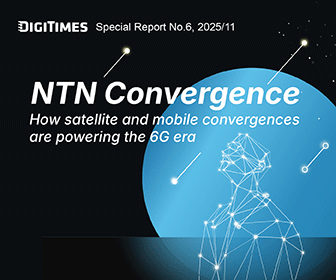Groundhog Technologies, an AI software firm specializing in the telecommunications sector, predicts that the primary growth drivers for 2024-2025 will emerge from high-population regions like Southeast Asia, as 5G adoption accelerates in Europe, the US, and various Asian markets.
The company sees potential in Nvidia's newly launched AI-RAN Alliance, despite its early-stage products and services. Groundhog expects this initiative to set new trends in the industry.
After going public in 2024, Groundhog has leveraged AI algorithms to help telecom operators optimize services, with over 90% of its revenue sourced from international clients such as India's Bharti Airtel, Japan's Rakuten Mobile, Singapore's Singtel, Saudi Telecom, and Taiwan's Far EasTone.
Groundhog notes that the telecommunications industry, being a licensed sector, places high importance on supplier reliability, making market entry challenging for outsiders. However, once a foothold is gained, maintaining long-term customer relationships becomes feasible. Recurring orders constitute 70-80% of Groundhog's revenue, with notable growth typically occurring in the fourth quarter due to telecom budget cycles.
Groundhog positions itself as a pure software, asset-light company. Hardware requirements, like servers, are managed by local operators or agents. Due to its specialized technology, Groundhog's main competitors are American firms. The current generative AI boom has had minimal impact on Groundhog, primarily aiding in generating digital advertising content.
Looking ahead, Groundhog anticipates significant 5G growth in Southeast Asia and India, regions with high population dividends. While Europe, the US, and China already have high 5G penetration rates, Southeast Asia, delayed by the pandemic, is just beginning to issue 5G licenses. Overcoming initial obstacles such as the absence of killer applications and higher power consumption of 5G phones compared to 4G phones will be crucial for broader adoption.
In February, Nvidia announced the AI-RAN Alliance, with key members including Amazon's AWS, Microsoft, Ericsson, Nokia, and Samsung Electronics. This alliance aims to enhance telecom equipment's computing power, such as integrating GPUs into base station servers to boost computational efficiency. Groundhog is optimistic about the potential of AI-RAN.
Groundhog's flagship product, the CovMo mobile network optimization and positioning platform, generates 90% of its revenue. As telecom operators move past their high-growth phase, Groundhog is diversifying into the digital advertising market with its Mobility Intelligence platform, already penetrating the Indonesian market. Groundhog highlights that Google and Meta dominate roughly 80% of the global digital advertising market, leaving 20% for other players. Telecom operators' control over mobile location data positions them advantageously for entering digital advertising.
According to public disclosures, Groundhog's revenue in April 2024 was approximately NT$20.58 million, marking an 85.5% year-on-year increase. Revenue growth has fluctuated in recent months due to the limited number of telecom operators per country, resulting in fewer but larger client projects. Consequently, the completion of individual projects can significantly impact revenue.




